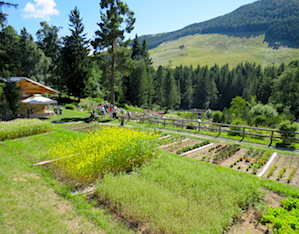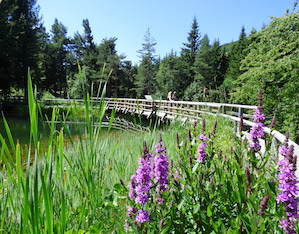On a trail that combines beauty and knowledge, plants typical to the world’s major mountain ranges thrive at this extensive, well-established botanical garden located on a sunny plain.
This botanical garden occupies a good ten hectares of land, adjacent to a woodland area at an altitude of 1,500 metres. The brainchild of Lino Bonomi, Director of the Museo di Storia Naturale della Venezia Tridentina, and botanist Giuseppe Dalla Fior, this garden was founded in 1938, making it one of the oldest such establishments in a truly special landscape: a south-facing plain of flowering meadows. The garden features some 2,000 species of high-altitude plants, many of which are endangered, spanning lake, pond, and wetland habitats, flower borders, a medicinal garden, dyeing and poisonous plants, a mountain vegetable garden, fields dedicated to cereals and heirloom varieties cultivated in the Alps, a shrub and arboretum dedicated to prime habitats in the Alps and the world’s forests, and even a lichen trail. Vittorio Marchesoni, the botanist who, more than anyone else, dedicated himself to the garden and contributed to shaping its current layout, wrote in 1959 that the garden should contribute to “hosting and therefore protecting regional flora, so rich in rarities and endemic species”, while also helping to “raise naturalistic awareness, an indispensable prerequisite for making the most of and conserving our naturalistic heritage”. The garden is managed by MUSE, the Museo di Scienze Naturali di Trento. Continuing with these same principles, MUSE cultivates plants solely from seed, helping to conserve biodiversity, while also taking part in an international non-commercial seed exchange scheme.




